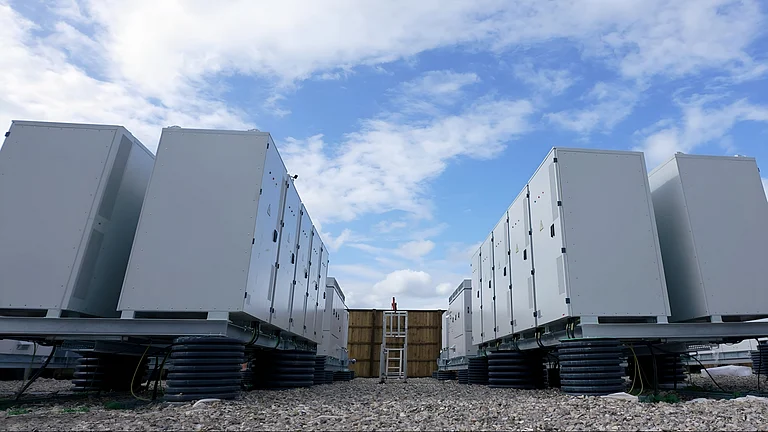Battery prices have fallen sharply, bringing BESS tariffs down to ₹4–7/unit from ₹8–9/unit in 2022, making storage more competitive against pumped storage.
BESS is now essential for grid stability, helping manage renewable variability, reduce curtailment, and ensure reliable supply as solar and wind penetration rises.
Government support is boosting adoption, with viability gap funding and transmission-charge waivers for storage projects extended till 2028.
Deployment is accelerating, with over 20 GWh of standalone BESS awarded since April 2024 and storage-linked renewable projects forming ~90% of awards in the first eight months of FY26.
Rapidly Falling Battery Prices to Drive Growth of Energy Storage Systems: ICRA
As the share of renewables increases, storage becomes essential to maintain grid stability, manage fluctuations, reduce curtailment, and ensure reliable supply
Battery Energy Storage Systems (BESS) are set to see strong growth in coming years as significant declines in battery prices make them more viable, rating agency Icra said on Thursday.
Battery Energy Storage Systems (BESS) are large-scale batteries that store electricity when generation is high especially during peak solar hours and release it when demand rises or renewable output drops. As the share of renewables increases, storage becomes essential to maintain grid stability, manage fluctuations, reduce curtailment, and ensure reliable supply.
The price of such systems has fallen to Rs 4.0-7.0 per unit, for the typical use case of storing power of 2-4 hours, from Rs 8.0-9.0 per unit seen in 2022, and are set to fall further, ICRA said. It is now becoming competitive compared to around Rs. 5.0 per unit for Pumped Storage Hydropower (PSP) projects, which come with higher execution risks and gestation period.
Storage systems are considered the ‘missing piece’ of the renewable energy story as they help deal with the variability of power generation in solar and wind.
The sharp decline in battery costs over the past decade has been driven by large-scale manufacturing, rapid technological improvements, falling raw material prices, and efficiencies gained through global supply-chain expansion, helping reduce the overall cost of energy storage and accelerating the adoption of BESS projects worldwide.
“Although BESS projects have shorter lifespans and require replacement capex, sustained reduction in battery prices is expected to drive greater adoption, going forward. The viability of these projects remains pegged to the capital cost. Based on the average battery cost of USD 70/kwh seen in 2025, along with associated taxes/duties and cost of the balance of plant, the capital cost is estimated in the range of USD 120-150/kwh,” said Girishkumar Kadam, Senior Vice President & Group Head - Corporate Ratings, ICRA.
Nonetheless, the ability of BESS projects to adhere to the performance parameters like availability, round trip efficiency, depth of discharge, degradation, etc remains a key monitorable, given the limited track record, ICRA said.
As India works to manage the variability of renewable power, Battery Energy Storage Systems (BESS) have become a key tool for maintaining grid stability. To support their deployment, the government has rolled out viability gap funding for BESS projects and extended transmission charge waivers for storage installations until 2028.
Between April 2024 and October 2025, central nodal agencies and state discoms have collectively awarded more than 20 GWh of standalone BESS capacity. In addition, the share of round-the-clock (RTC), firm and dispatchable renewable energy (FDRE), and solar-plus-storage projects has remained strong, accounting for nearly 90% of the renewable capacity awarded in the first eight months of FY2026.



